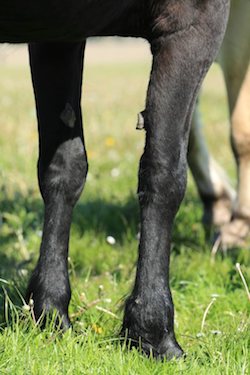
A joint consists of bones, cartilage and synovial fluid (joint fluid). Osteoarthritis is not damage to the bone but to cartilage. The function of cartilage is to reduce friction and to relax movement between bones in a joint. Healthy cartilage is smooth and resilient, but osteoarthritis cartilage is rough and stiff. This causes an inflammation, and the body starts to form new bone in response because it cannot produce new cartilage. When a horse forms a new bone, nerves may become trapped, which causes joint pain and even paralysis. The inflammation associated with osteoarthritis can be treated and withdrawn, so that the horse feels less pain. The symptoms of osteoarthritis can be treated in part, but osteoarthritis cannot be cured.
Make sure the horse is not on the trail, can move freely, and have a blanket during the winter. In addition, appropriate nutrition is vital to alleviate joint pain. The Hartog Senior is specially tailored to the needs of an old horse with wear or other discomfort. A herbal blend has been added to this food that is slightly analgesic and therefore mood-enhancing.
Receive the latest offers, exclusive content and news from Hartog Family Farms.

Grasdrogerij Hartog B.V.
Mijnsherenweg 7
1658 CA Lambertschaag
0229 – 58 12 32
info@hartog.eu